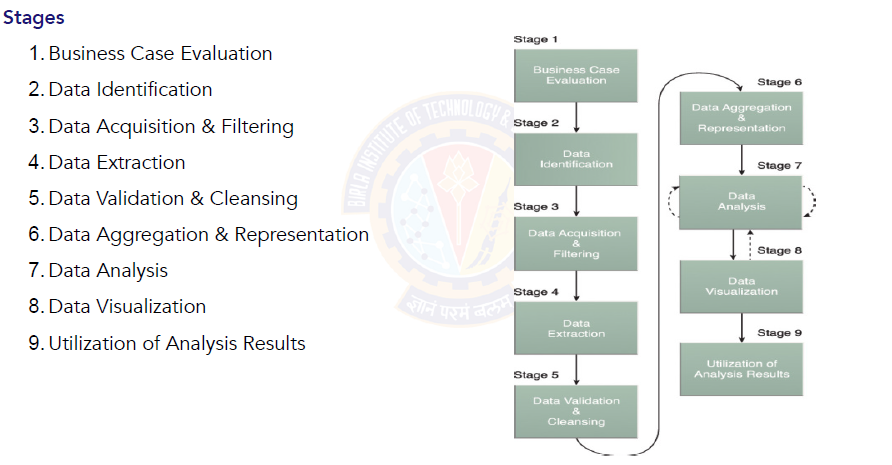All the messages below are just forwarded messages if some one feels hurt about it please add your comments we will remove the post.Host/author is not responsible for these posts
Saturday, April 8, 2023
Cassandra
Thursday, March 9, 2023
INSTALLING HADOOP, HIVE IN WINDOWS & WORKING WITH HDFS -- Ramana (Along with recording)
Friday, March 3, 2023
Install Hive/Derby on top of Hadoop in Windows
Monday, January 9, 2023
BITS-WILP-BDS-Regular 2023-Mid Semester
Q1. Discuss briefly 3 key issues that will impact the
performance of a data parallel application and need careful optimization.
Q2. The CPU
of a movie streaming server has L1 cache reference of 0.5 ns and main memory
reference of 100 ns. The L1 cache hit during peak hours was found to be
23% of the total memory references. [Marks: 4]
- Calculate the
cache hit ratio h.
- Find out the
average time (Tavg) to access the memory.
- If the size of
the cache memory is doubled, what will be the impact on h and Tavg.
- If there is a
total failure of the cache memory, calculate h and Tavg.
Q3. A travel review site stores (user, hotel, review)
tuples in a data store. E.g. tuple is (“user1”, “hotel ABC”, “<review>”).
The data analysis team wants to know which user has written the most reviews
and the hotel that has been reviewed the most. Write MapReduce pseudo-code to
answer this question. [Marks: 4]
Q4. An e-commerce site stores (user, product, rating)
tuples for data analysis. E.g. tuple is (“user1”, “product_x”, 3), where rating
is from 1-10 with 10 being the best. A user can rate many products and products
can be rated by many users. Write MapReduce pseudo-code to find the range (min
and max) of ratings received for each product. So each output record contains
(<product>, <min rating> to <max rating>).
[Marks: 4]
Q5. Name a system and explain how it utilises the
concepts of data and tree parallelism.
[Marks: 3]
Q6. An
enterprise application consists of a 2 node active-active application server
cluster connected to a 2 node active-passive database (DB) cluster. Both tiers
need to be working for the system to be available. Over a long period of time
it has been observed that an application server node fails every 100 days and a
DB server node fails every 50 days. A passive DB node takes 12 hours to
take over from the failed active node. Answer the following questions.
[Marks: 4]
- What is the
overall MTTF of the 2-tier system ?
- Assume only a
single failure at any time, either in the App tier or in the DB tier, and
an equal probability of an App or a DB node failure. What is your estimate
of the availability of the 2-tier system ?
Q7. In the
following application scenarios, point out what is most important - consistency
or availability, when a system failure results in a network partition in the
backend distributed DB. Explain briefly the reason behind your answer.
[Marks: 4]
(a)
A limited quantity discount offer on a product for 100 items at an online
retail store is almost 98% claimed. (b) An online survey application records
inputs from millions of users across the globe.
(c) A travel reservation website is trying to sell rooms at a destination that
is seeing very few bookings.
(d) A multi-player game with virtual avatars and users from all across the
world needs a set of sequential steps between team members to progress across
game milestones.
Q8. Assume
that you have a NoSQL database with 3 nodes and a configurable replication
factor (RF). R is the number of replicas that participate to return a Read
request. W is the number of replicas that need to be updated to acknowledge a
Write request. In each of the cases below explain why data is consistent or
in-consistent for read requests.
[Marks: 4]
1.
RF=1, R=1, W=1.
2. RF=2, R=1, W=Majority/Quorum.
3. RF=3, R=2, W=Majority/Quorum.
4. RF=3, R=Majority/Quorum, W=3.
Thursday, January 5, 2023
Hadoop 2 - Architecture
MapReduce Programming Architecture and flow
Big Data Analytics Lifecycle
Mean Time Failure and other Formulas
Wednesday, January 4, 2023
Cache performance and Access time of memories
Hit + Miss = Total CPU ReferenceHit Ratio h = Hit / ( Hit + Miss )
Tavg = Average time to access memoryTavg = h * Tc + ( 1-h ) * ( Tm + Tc )









